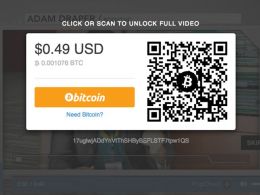
Content Monetization via Bitcoin Nanopayments: How It Works and Why It Is Convenient
In February 2016, SatoshiPay introduced a new feature – payment for online content via Bitcoin nanopayments. Thus, users have obtained a possibility to pay for useful information only, and content producers – to monetize their products quickly.
What is a nanopayment?
It is a Bitcoin transaction for an amount up to one cent or less.
Why is it convenient?
- This service provides instant transfer of funds and high frequency of transactions: a user can carry out several operations per one second.
- Nanopayments enable users to pay only for a portion of content (videos, texts, etc) that is really interesting.
- Payments are made in one click without registration.
- Ability to pay for content automatically.
Traditional systems are not interested in micropayments because of high operating costs; however, SatoshiPay has kept costs to a minimum.
“This opens up new opportunities to monetize web content and other digital products,” a co-founder and CEO at SatoshiPay Meinhard Benn said.
At Blockchain & Bitcoin Conference Prague 2016, he will tell why micropayments are able to develop new business models and how to implement them in smart contracts.
The title of Meinhard Benn’s report is “Nanopayments – Fuel for a Machine-To-Machine Economy.”
Meinhard Benn has founded SatoshiPay. He is an experimenting businessman, a miner, a trader and a fan of cryptocurrency, who promotes Bitcoin ecosystem globally.
Hurry up to join Blockchain & Bitcoin Conference Prague and ask a question to the speaker!
Registration: http://bitcoinconf.eu/en/registration
Related News





